WoodenuKnow.com is a participant in the Amazon Services LLC Associates Program, an affiliate advertising program designed to provide a means for sites to earn advertising fees by advertising and linking to Amazon.com and may earn from qualifying purchases.
Maple trees are one of the most important and versatile hardwood tree species. There are two main types of maple, hard and soft.
The term “hard” refers to the fact that these maples have higher density than other varieties of maple; they can be used for furniture, flooring, and other heavy-duty applications. Soft maples lack this hardness but are still prized for their beauty.
Evaluating different types of Maples requires understanding what type you’re dealing with: Hard or Soft Maple? Once you know which one your project needs, it will become easier to find a supplier who carries that specific type.
Let’s proceed to the next section for a deeper understanding.
What is Hard Maple?
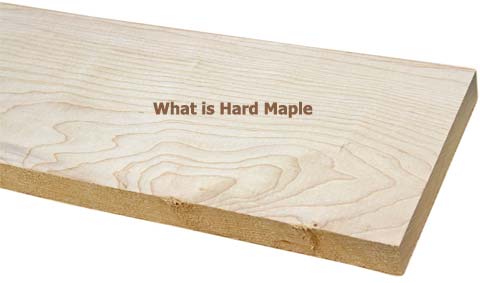
Hard maple wood has been used for centuries by furniture makers and manufacturers because of its durability. You’ll often see it utilized in crafting tables, chairs, dressers, chests of drawers any piece that requires strength without sacrificing beauty.
It can grow up to 100 feet in height and typically has a diameter of up to one foot. The sapwood bleeds purple when cut, while the heartwood ranges from light brown to black with dark streaks. The wood is very dense and has an average weight of 72 lbs. per cubic foot. This hardness makes it a popular choice for flooring, cabinetry, or other building materials.
The wood itself can vary greatly from tree to tree but typically ranges between light browns with tan hues up to orange colors depending upon what region it’s harvested from, not unlike red oak does.
You will find that hard maple is typically lighter than red oak because it lacks the tannins found in other oaks like black or white oak, which give them their dark brown tones. The sapwood color on Hard Maple can vary depending upon age but generally ranges between cream to light tan or pinkish tan, while the heartwood tends toward an off-white hue.
Besides its hardness, one of the most endearing qualities about hard maple is how easily it can be finished and shaped. It has an even texture that makes for a smooth finish without any grain patterns or knots hindering your progress.
The wood also works beautifully with stains because you don’t have to worry about blotchy splotches appearing in different areas like oaks do. Making Hard Maple perfect for furniture pieces where you plan to apply stain before finishing them off with polyurethane or varnish.
The only downside to working with hard maple is the cost-effectiveness if you’re looking at buying large quantities. Since it is less available and harder to find than other woods, it tends to cost more when bought in bulk. Hard Maple is also one of the heaviest hardwoods on the market, which makes transportation costs higher since you’re going to need a strong truck or freight service.
What is Soft Maple?
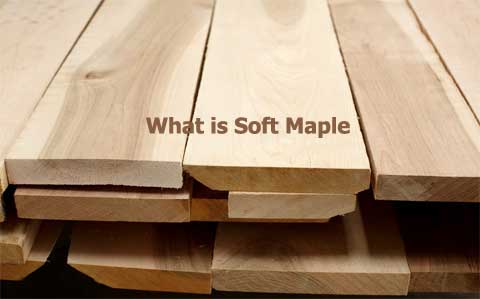
Soft maple is a type of wood that comes from Eastern North America and Europe. It has medium density, making it great for furniture or any other projects that require durability without weighing too much.
This variety of wood can be found in shades of light to dark browns, with knots often appearing as streaks across the board’s surface before being handed down during finishing processes.
This species boasts some rather impressive benefits, for example, its beauty, especially when stained. Coupled with its lightweight frame, it is ideal for many different types of project work, including children’s toys, games, puzzles, and even jewelry boxes.
This material is lightweight, with a medium-density (just right) that makes it perfect for furniture or games where weight can be an issue. It’s also easy to work and manipulate into different shapes without breaking.
Soft maple has light coloration properties which mean it works well as both a structural piece in furniture designs or simply as decoration on shelves or walls. In addition to its strength across multiple industries, this variety of wood is also inexpensive, so you get more bang for your buck.
The Difference Between Hard Maple vs Soft Maple
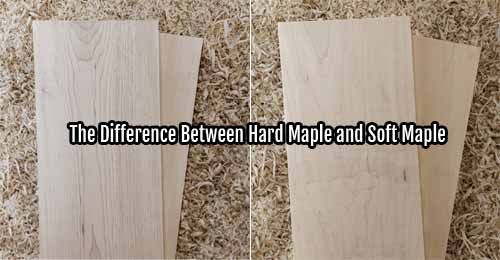
Hard maple vs soft maple, these two types of maple are very different, but both have their uses and advantages.
You can choose which type you want to use depending on the project you’re working on or your personal preference.
The following sections will provide an in-depth discussion of every perspective based on Hard Maple and Soft Maple.
Structure
Hard maples are much stronger than Soft Maple, and that is why it was often used as the preferred wood for things like furniture.
Going back to hardness, hard maple has a high resistance against moisture damage because it’s so dense. Soft Maple, on the other hand, can’t handle as much weight or pressure before breaking, which makes it less ideal for furniture pieces. Those are supposed to hold up in heavy traffic areas like hallways or stairs inside your home.
Soft maple weighs a lot less than Hard Maple, making it more favorable to projects where weight might be an issue or concern. It’s also easier to transport if you’re transporting large quantities of materials.
If you’re looking at durability, then Hard Maple might be best suited for your needs, especially if you have children running around who tend to bump into things often.
Cost-effectiveness
Soft maple is usually cheaper than hard maple, so it might be tempting to buy it instead. However, there’s a big difference in quality. Hard maple has a tighter grain pattern which makes it more durable and water-resistant than soft maple.
It also offers better edge retention for cutting boards because the tight grain doesn’t dull knives as quickly as softer wood. For these reasons, many craftsmen prefer working with hard maple over soft maple.
You will find that hard maple tends to cost more in larger quantities because of its availability, while soft maple can generally be found at a lower price point across retailers
Tolerance
Hard maple is harder than soft maple, so it’s more difficult to work. Soft maple has a higher tolerance for moisture and water damage because of its lower density. It also stains better because the color doesn’t saturate in certain areas leaving blotches that can be unattractive.
You can’t use soft maple to make furniture for kids because it will scratch too easily. Hard maple is a better option if you want the longevity of your piece to be long-lasting without scratches or staining issues.
Hard maples help them hide those pesky scratches much more so than softer maples where they tend to show through quite prominently with regular maintenance requirements.
One downside, though (depending on what’s most important) is that hard maples don’t do as well at resisting water damage, making them not ideal for pieces like kitchen cabinets and shelving units that might get wet frequently during dishwasher cycles or hand washing dishes by submerging them into warm wash-water.
Density
Hard maple has a higher density than soft maple. Harder woods are denser because they have more cells per cubic inch of wood and less air space between the cells, so hardwood tends to weigh more for any given size.
The density can be measured as pounds per cubic foot (pcf). Soft maple ranges from 72 to 117 pcf, while hard maple ranges from 100 to 140 pcf.
To see the density of a particular board, you can look at two numbers on the end edge. For example, if it reads 12×12 and is labeled HARD MAPLE 100PPCF or SOFT MAPLE 117 PPCF, then that board weighs about 120 pounds per cubic foot. If it reads 12×12 and is labeled HARD MAPLE 105 PPCF or SOFT MAPLE 90 PPCF, then that board weighs about 111 pounds per cubic foot.
It is a misconception that hard maple has more knots than soft maple. Knots are an inescapable part of woodworking and not just associated with the type of tree, nor do knot content change the density of the wood.
The hardness is not related to knots either. Hard maple has less lignin, which makes it harder than soft maple and other woods like pine or cedar that have more lignin in them. Lignin resists compression on this level, too, because it provides strength against impact from outside forces such as pliers.
This is why hard maple can be sanded to a higher grit than soft maple because it has less lignin and more cell structure with the same density as other woods.
Applying Finishes
Neither type of hardwood will have as much trouble with varnish or paint when compared to other types like oak because they don’t soak up the material quite as easily, which reduces the chances of uneven distribution across their surface area.
Another thing to note is that hard maples might require more sanding and finishing work than soft maple. This can also take up a lot of time during the process, so if you’re looking for something quick then this probably isn’t the best wood type for your needs.
The only downside here is finishing processes may require more time since this type of wood isn’t quite as durable when sanded down after long periods of use, making refinishing necessary over and over again.
Colors & Appearance
Soft maple is lighter in color than hard maple and has more of a reddish hue to it. This means that you can use this type of wood for projects where colors are necessary or needed, like painting furniture pieces with light shades or using them as decoration on the walls inside your home.
Hard Maple could be a better option because its darkness helps hide scratches better when compared to Soft Maple, which tends to showcase them quite prominently without regular maintenance.
Both have different appearances which can be an issue for some projects. For example, if you are looking to stain your wood then it may not look as uniform with the grain in soft maple since its lighter coloration will show through those spots where stains don’t reach.
On the other hand, when painting or using a varnish or polyurethane finish on top of softer maples, they typically have fewer issues from blotchy splotches that sometimes appear due to oaks’ dark brown tones.
FAQ’s
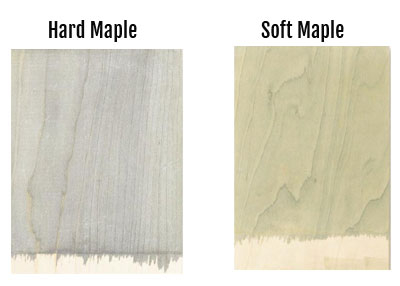
Maple is a popular hardwood that has two types: Hard Maple and Soft Maple. It can be difficult to tell the difference between them, so we’ve outlined some of the key differences below and given answers to Frequently Asked Questions on Hard Maple and Soft Maple.
Which maples are hard maples? And which maples are Soft maples?
Hard Maple and Soft Maple, There are many different species of maples and some may be hard, others might not. However, the three most popular hard maple varieties are Sugar Maple (Acer saccharum), Black Maple (Acer nigrum), and Northern Hard Rock Maple (Acer platanoides). They all grow in Canada as well as parts of the northeastern United States.
Soft maples are often less dense, making them easier to work with than hard maples. The major soft maple varieties include Red Maple (Acer rubrum), Silver Maple (Acer saccharinum), and Sugar Maple (Acer saccharum).
The main problem with choosing between hard and soft maple is in the durability and weight. If you’re building a high-quality table, then you’ll want to choose the Hard Maple.
The structure of this type of wood will support the weight of heavier objects. Soft Maple might be better for furniture that doesn’t need to be as sturdy, such as a child’s desk or chair.
Like any wood, both hard and soft maple have their own advantages and disadvantages.
How do you tell what type of maple it is and how it can grow?
Maple trees can be identified by their leaves, bark, and growth patterns. The best way to identify an unknown tree species is to compare its characteristics with those of known related species.
Also, you can feel how hard a piece of wood is by pushing your thumb into it. If there’s barely any indentation then it will probably fall under the category of “hard.” If there is an indentation then it will probably be a softer type of wood.
Soft maples can grow in a wider variety of areas than hard maples. There are also some places where both varieties thrive. Soft maple grows well in moist climates, temperate zones (depending on the species), and dry-mesic forests whereas hard maple are usually found growing near rivers or other bodies of water.
The best option for your project depends on what it will be used for as well as personal preference. If aesthetics matter to you then soft maple might not be the right choice because its lighter coloration won’t hide scratches with regular maintenance as hard maple does.
On the flip side though, if durability is more important than Hard Maple may be better suited since it’s harder to scratch and stains less.
Hard Maple vs. Soft Maple, which is better?
The difference between hard maple vs. soft maple can be confusing. To help you decide, we’ve created this guide to the differences between these two types of wood.
There are many factors that contribute to the hardness or softness of a piece of wood. Density is the most important factor in determining whether a wood piece is hard or soft.
A denser piece of wood will be harder than less dense pieces because it has more material per unit volume. This means that softer woods have fewer fibers per inch than hardwoods do, so they’re easier to cut and shape but also more likely to warp over time due to changes in humidity levels and temperature.
If you’re looking for a hardwood to use in place of softwoods, it’s best to choose one between hard maple vs soft maple with the same density as your softer wood. For example, if you want to replace pine boards with oak flooring, look for an oak board that has the same hardness rating as the current floorboards.
Summary Points & Some Additional Tips to Remember
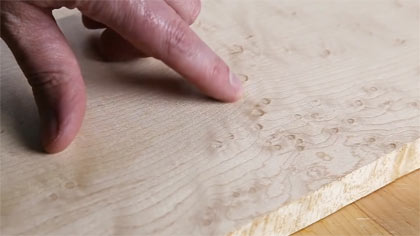
- Hard and soft maple trees can be identified by their leaves, bark, and growth patterns.
- To know the difference between hard and soft maple, the best way to identify an unknown tree species is to compare its characteristics with known related species.
- Soft maples grow well in moist climates, temperate zones (depending on the type), and dry-mesic forests, whereas hard maple is usually found near rivers or other bodies of water.
- Soft Maple is a type of tree that grows primarily in North America. The soft maple tree is often used for furniture, flooring, and musical instruments.
- The use of hard maple gives off very little dust when cut or sanded compared to other types of wood because it doesn’t have any pores.
- Hard maple is more durable and less likely to warp or crack.
- The color of hard maple ranges from a light brown, almost blonde hue all the way to black.
- Soft Maple can be found in many different colors, including pink or purple, when dyed. The lighter shade changes as the wood ages, which could look good in a kitchen.
- Hard Maple is likely to cost more than Soft Maple because it’s not as common, and the wood can only be found on certain trees due to its high density.
- Soft maple is usually cheaper than hardwood but it’s not as durable as Hard maple.
Conclusion
Hopefully, this blog post has helped you understand the difference between these two types of maples and will help you decide which one would be a better option for your project.
It all depends on what it will be used for and personal preference. If aesthetics matter to you,, then soft maple might not be the right choice because its lighter coloration won’t hide scratches with regular maintenance as hard maple does.
On the flip side, if durability matters most then, Hard Maple may be more beneficial since it’s harder to scratch and stains less, so that would make upkeep easier than softer maples where keeping them clean can become difficult over time. Both types of maples have their advantages depending on different circumstances, which mean that some projects require one type while others need another type.

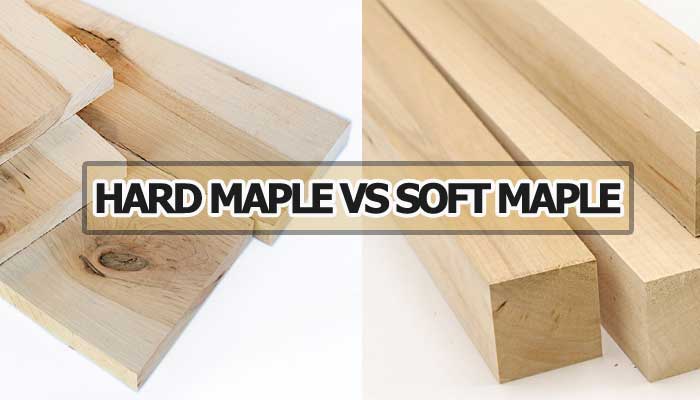

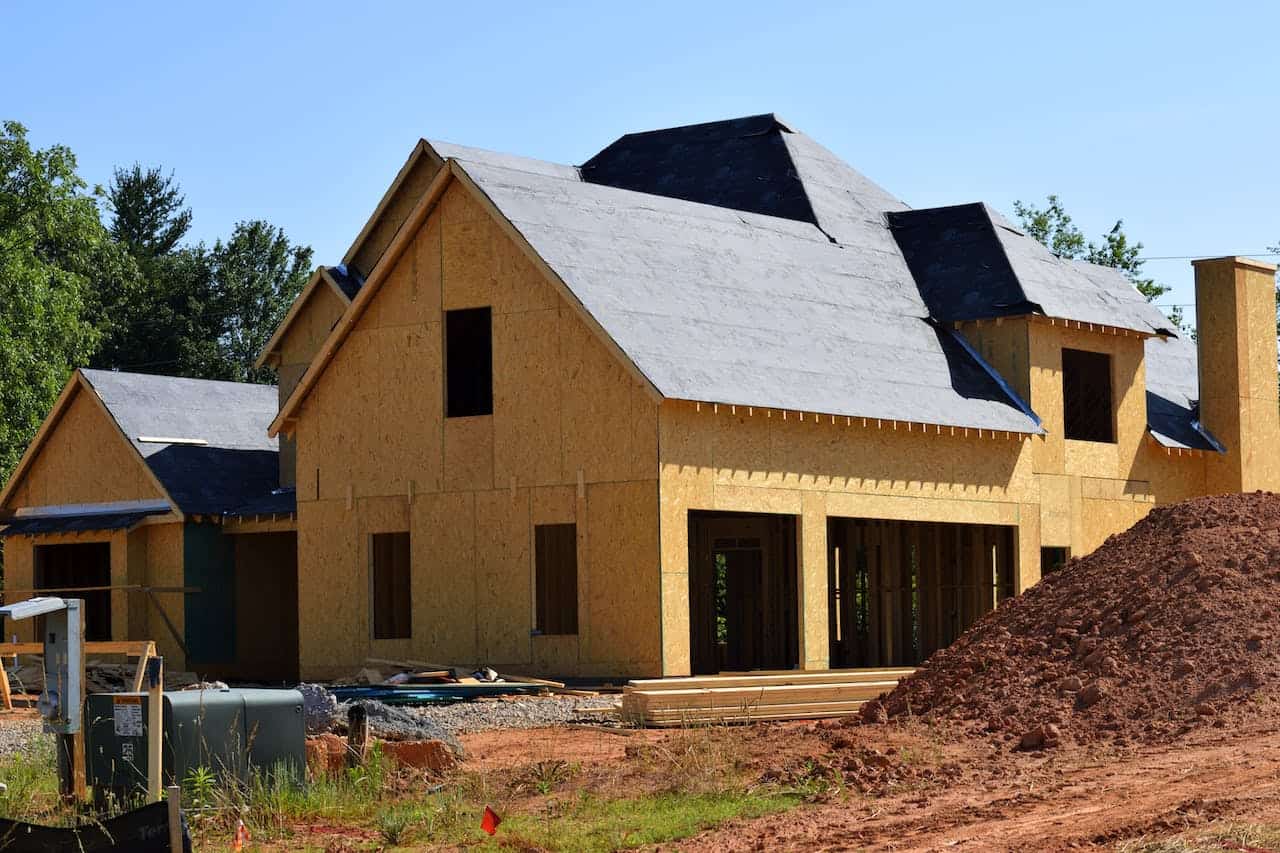
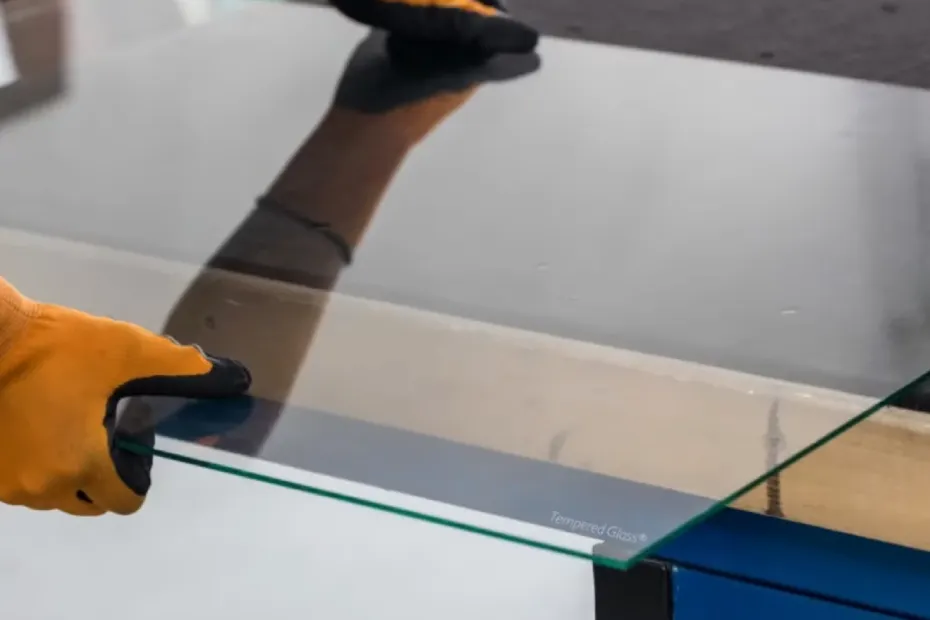
I have the privilege of making two boxes which will hold my Parents’s ashes. The boxes will match in design, however, they will differ in color. My father’s will be dark walnut and I’d like my mother’s to be a very light color. His decoratively splined with the light wood of her box and hers decoratively splined with the dark wood of his. I’ll finish his with Danish oil and bee’s wax. I plan to finish hers with a simple Danish soap finish in order to keep the wood as light as possible.
I’ve been thinking soft maple for her box, as I’m picturing soft maple to be lighter in color than hard maple… your thoughts, opinions, ideas, suggestions?
While I like figured walnut and birds eye maple – I’ve been instructed to keep the boxes very simple, so I’ll be needing simple straight grain; simplistic beauty is paramount with this project. I’m only considering contrasting splines to tie the two boxes together just as my parents were tied together in life.
You can choose soft maple for her box. 🙂